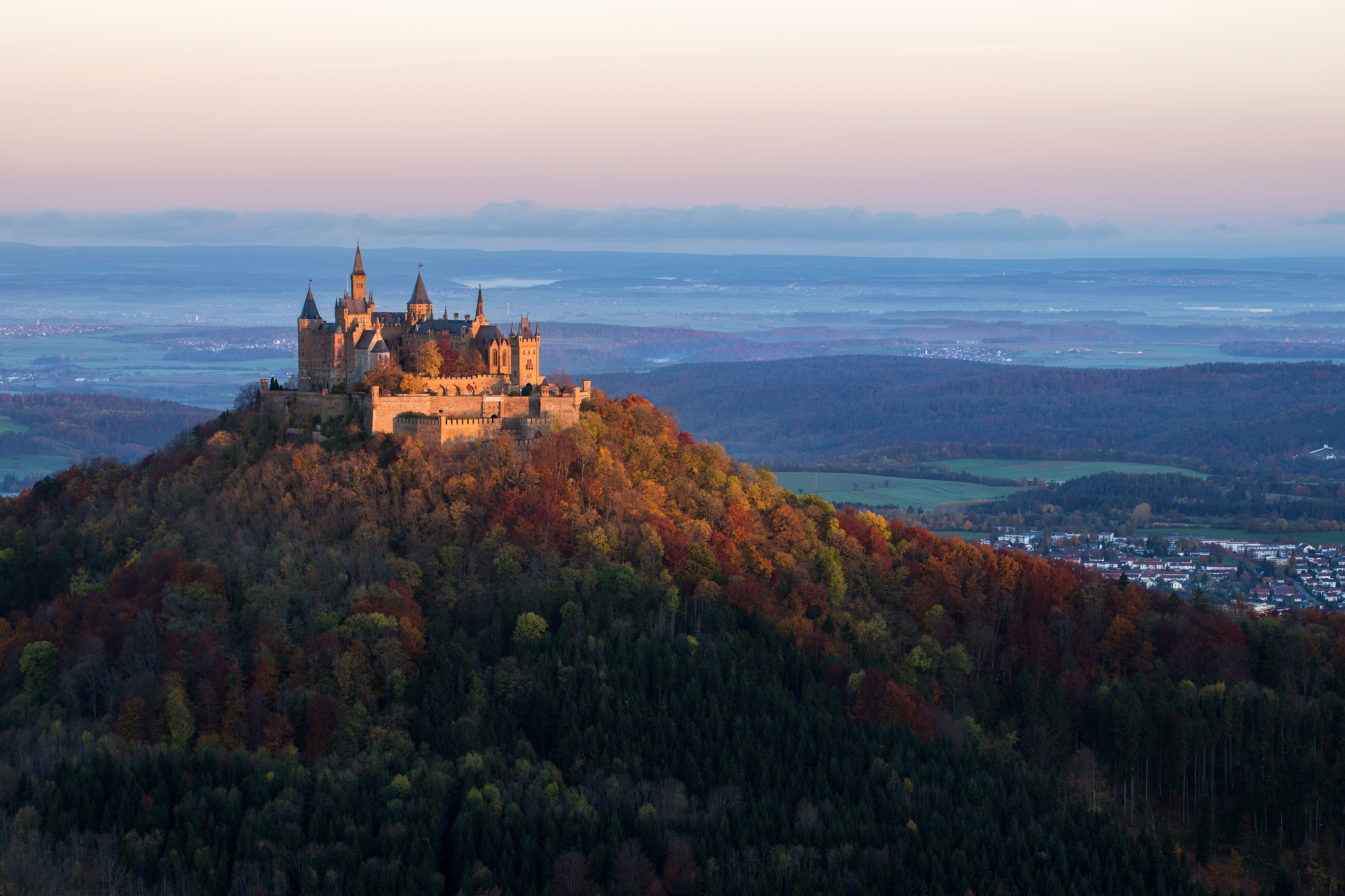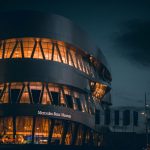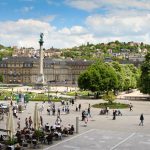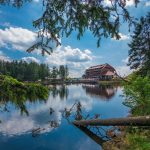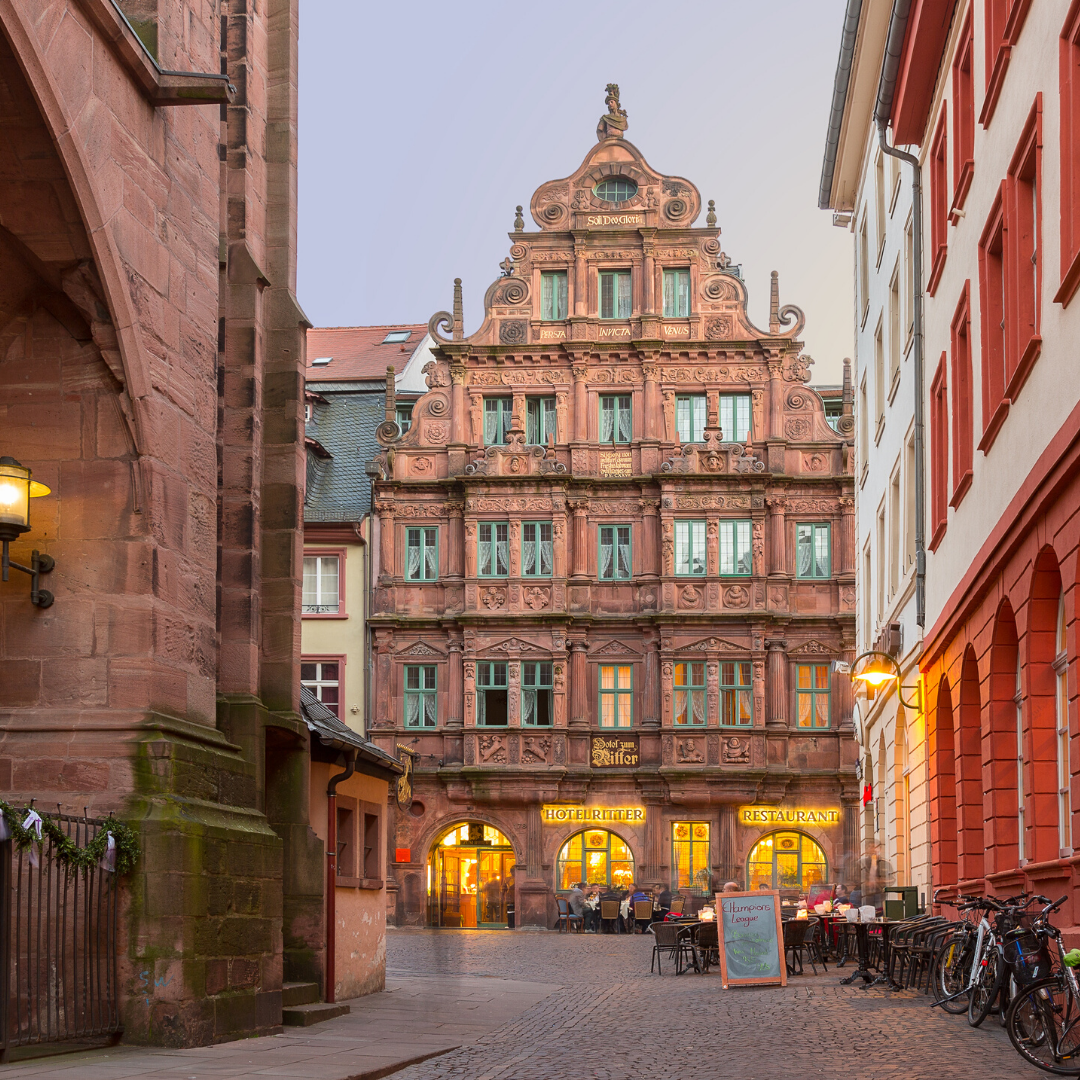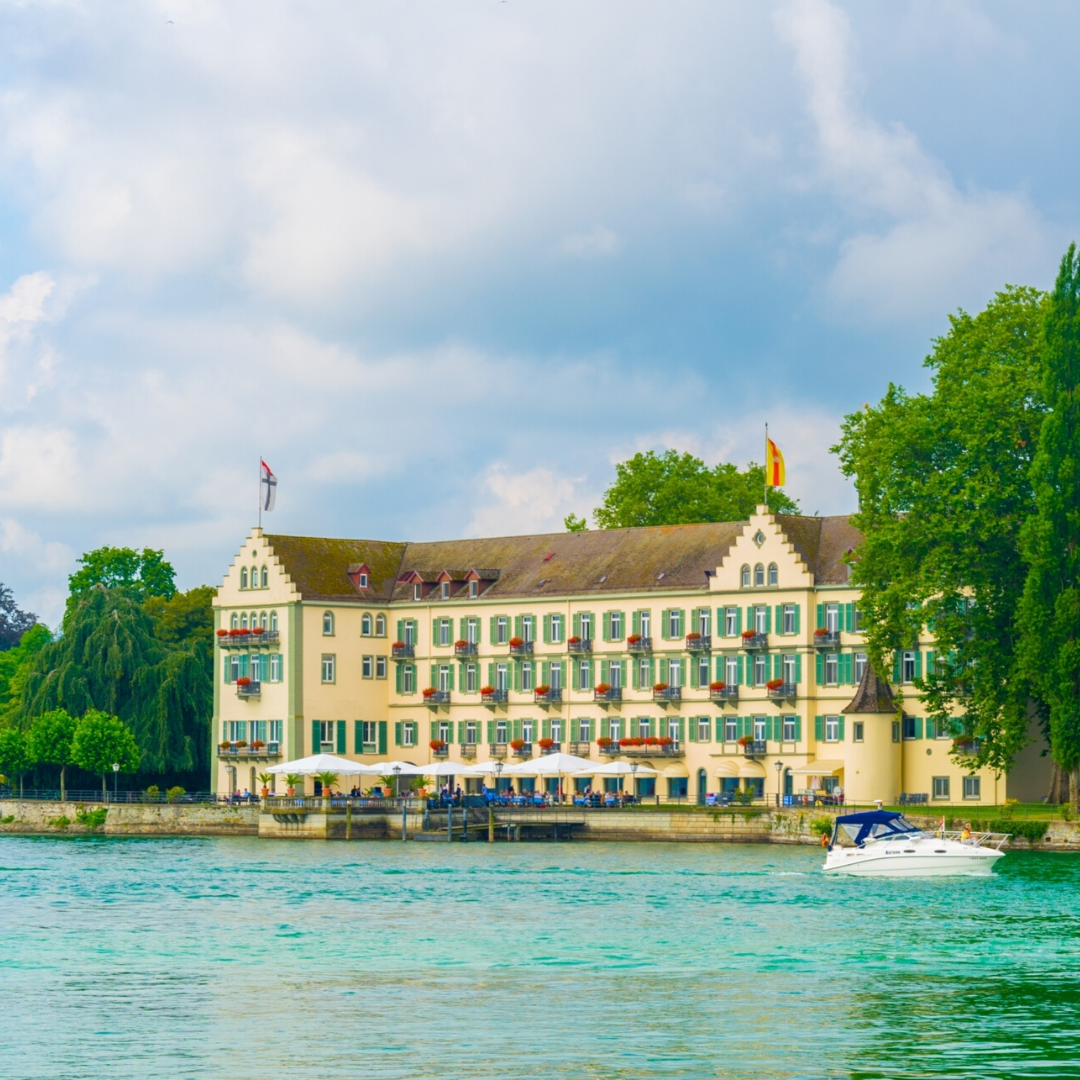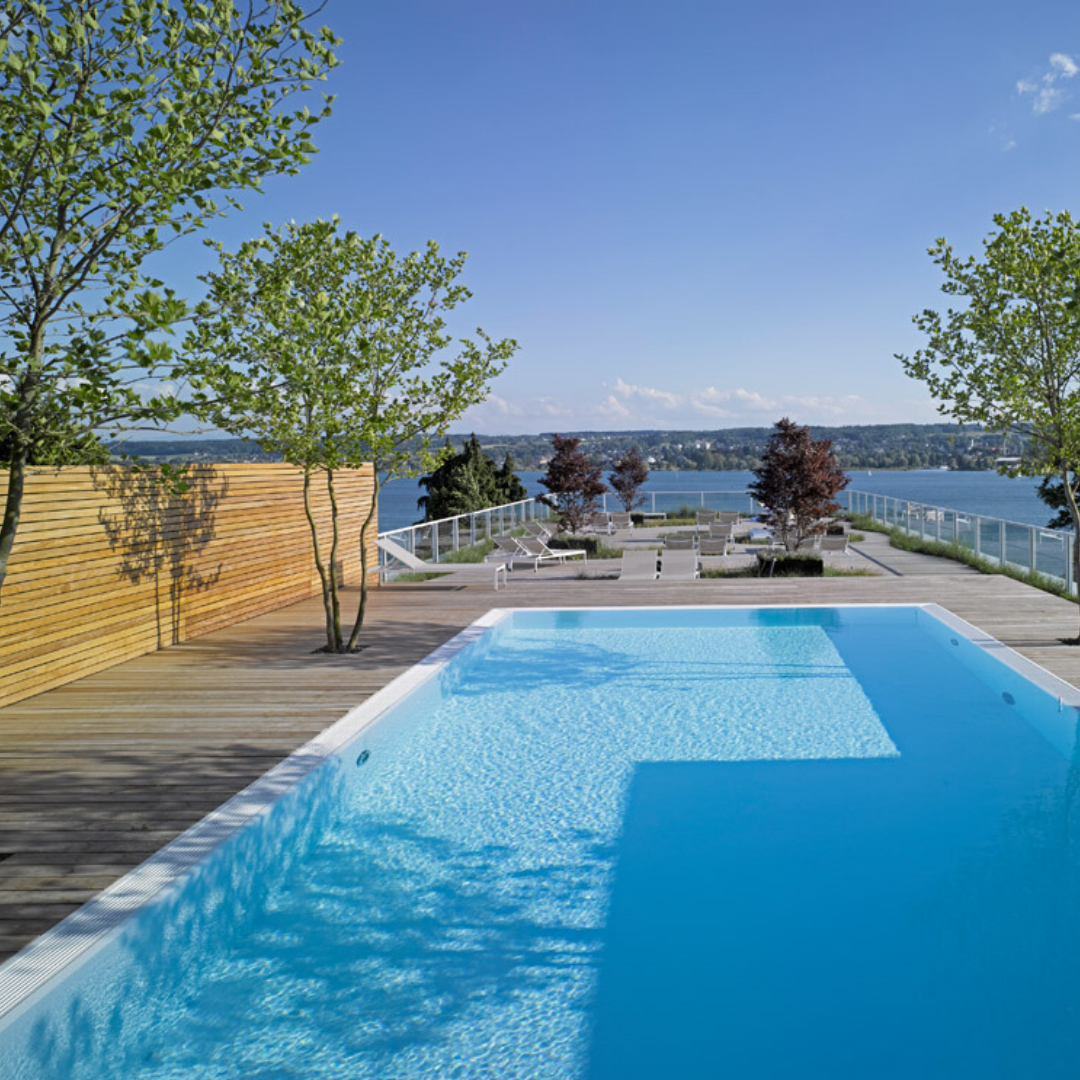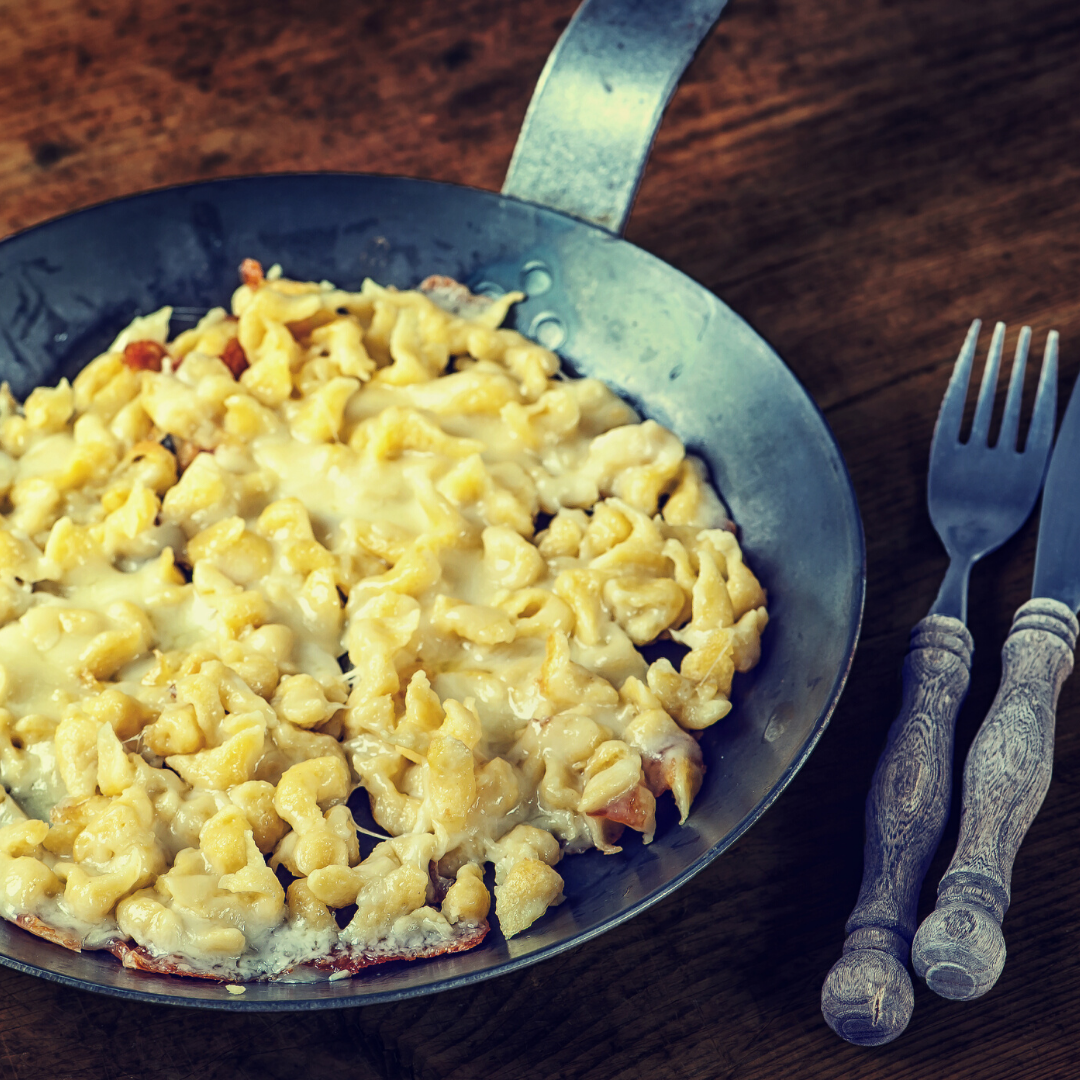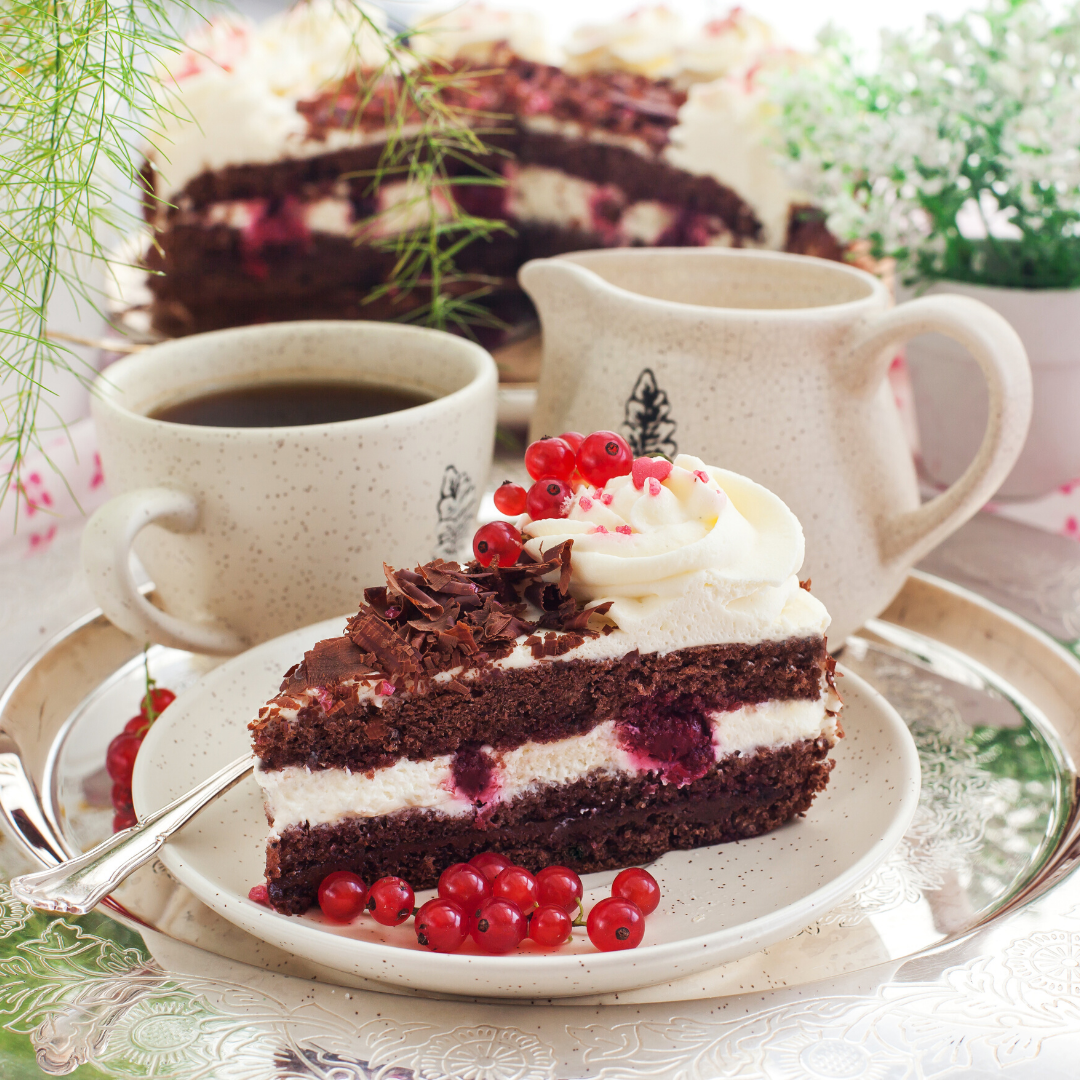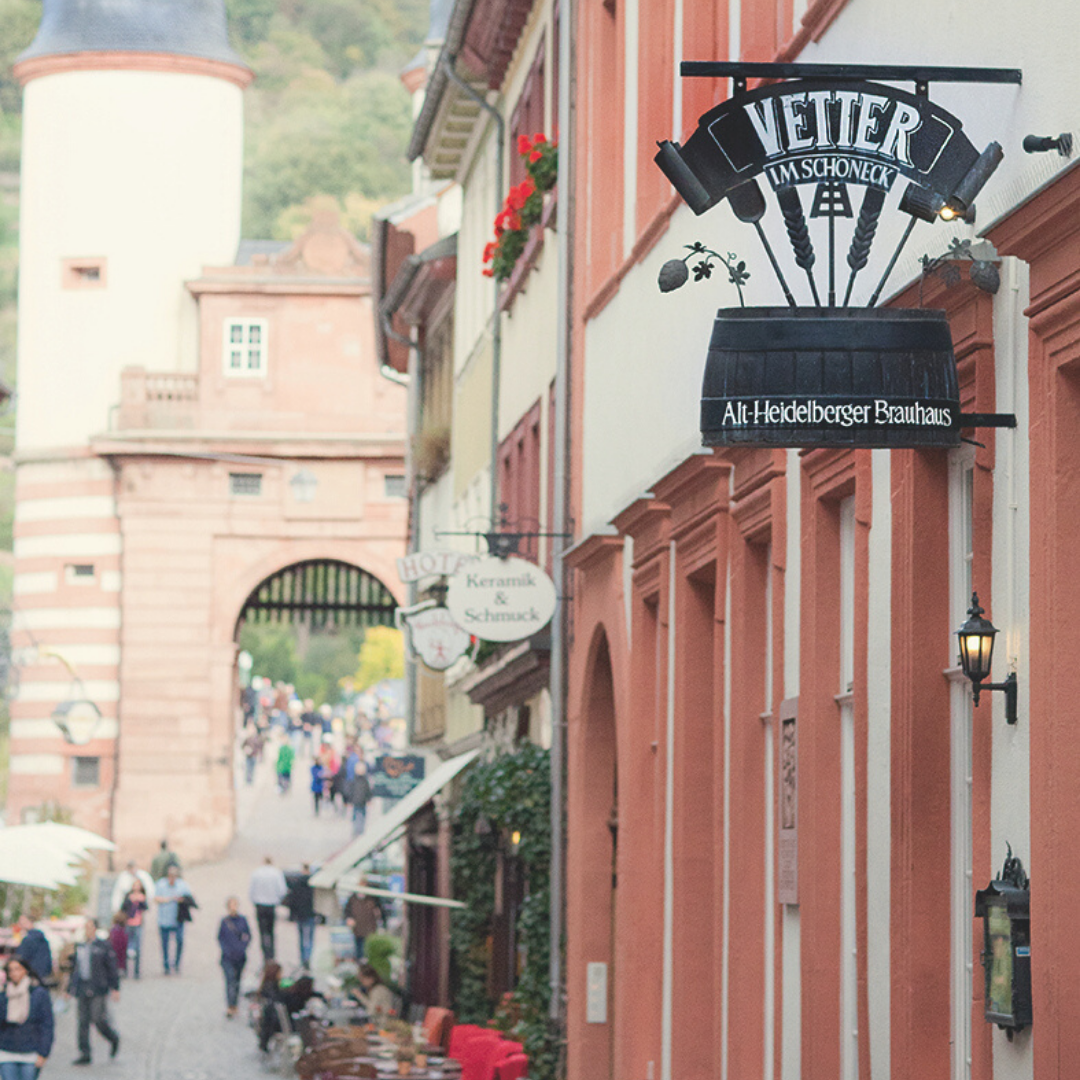There’s more to Germany than Berlin, and the country’s south-west region, Baden-Württemberg, offers more in beauty and interest than you can prepare for.
Immerse yourself in a world of rich history, cutting-edge culture, natural beauty and alternative eats. And if you needed another reason to go to Germany, this is it.
Where is Baden-Württemberg?
Baden-Wurttemberg is a region in the south-east of Germany, bordering on France, Switzerland and Austria.
Across the rest of Germany, this region (also known as Swabia) has a reputation for hard-working and frugal residents, but the industriousness of the Swabians has led to some of Europe’s brightest and most inventive minds, boasting the birthplace of Einstein and Hegel, aircraft manufacturer Ferdinand von Zeppelin and car engineer Karl Benz.
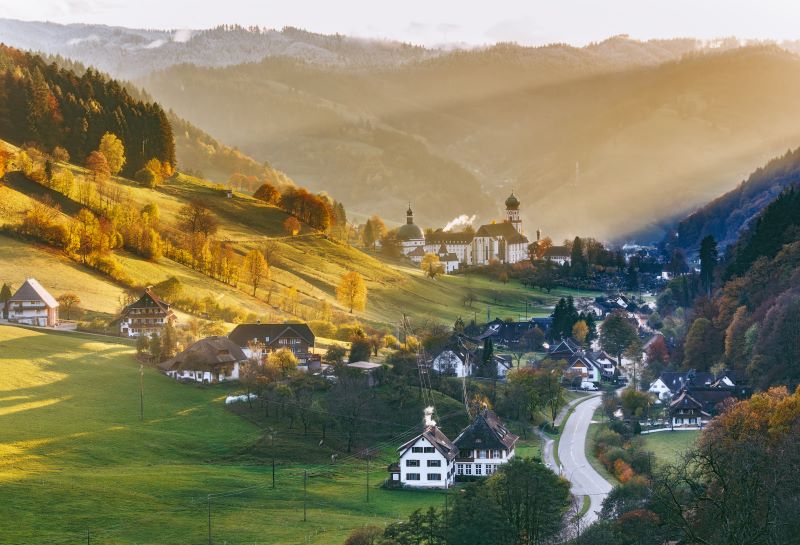
A village near The Black Forest. Image via Shutterstock.
Against this setting of monumental achievement is not the straightforward and unimaginative landscape you might imagine, but a Romantic and mountainous region, filled with luscious forest, mirrored lakes and cobbled German villages. It’s a must-see for anyone who wants to get to know Germany’s rich and vibrant offerings.
Plus, it’s one of the oldest sites of human habitation in Europe, with the skeleton of early human homo heidelbergensis dating back almost 400,000 years. It’s easy to see why this spot would be chosen to live in for so long, with a pleasant climate, verdant nature and sheltered valleys to enjoy.
To give you a head start on your trip, here’s our ultimate guide to Baden-Württemberg, covering the best things to do, places to stay and where to eat and drink.
What To Do
With a region as varied as Baden-Württemberg, there’s plenty to do to keep you entertained. Whether you want to geek out on the history, soak up the incredible natural offerings or just simply relax, there’s something for everyone. To keep you inspired, here are our top five things to do in the region.
1. Experience modern Germany in Stuttgart
Stuttgart is the industrial capital of Baden-Württemberg, but don’t be deceived! It’s no concrete jungle, but a surprisingly small and leafy town of less than 600,000 residents, filled to the brim with parks and students. Its biggest claim to fame is as birthplace and home to motor giants Mercedes and Porsche, so it is unmissable for any car lover heading to this part of the country – especially the famous Mercedes Benz Museum.
Because of this, it’s known around Germany for city slickers who like their fast cars and pretentious dining, but, in fact, this thriving industry leads to a vibrant arts and culture scene, and Stuttgart is even gaining a reputation within the performing arts sector. This may be in part due to the university which also calls the town home, and has one of the most spectacular libraries in the world. It’s the perfect stop on your trip to check out some of modern Germany’s blooming arts culture and sample some international cuisine.
- Mercedes Benz Museum in Stuttgart. Image via Unsplash.
- Stuttgart Library. Image via Unsplash.
- Stuttgart Square. Image via Shutterstock.
2. Soak up the History at the University Towns
Baden-Württemberg boasts not just one, but three, beautiful university towns which are steeped in history and beautiful architecture.
Einstein’s hometown of Ulm prides itself on having both the world’s tallest steeple on its epic Minster, and also the world’s most crooked house. If you happen to be here in July, you have to head to Ulm for the city’s annual holiday, where everyone heads down to the Danube for a huge pool party (sort of).
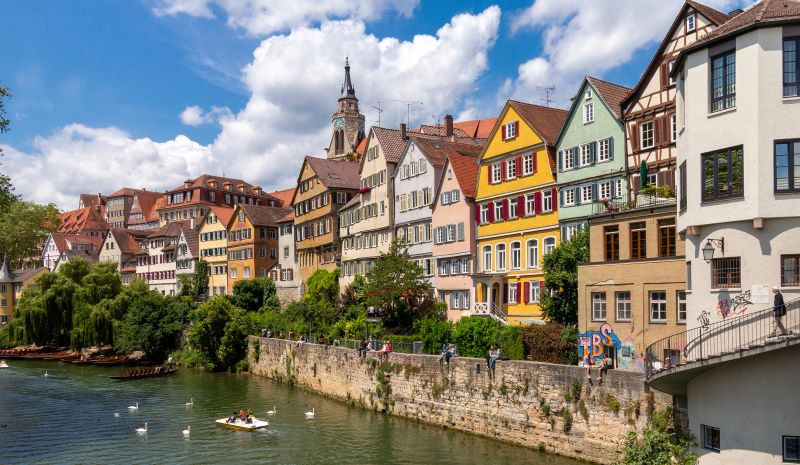
Tubingen houses. Image via Shutterstock.
Tubingen also offers a picturesque university town to visit. Located on the river, it joins some of Europe’s prestigious university towns with a buzzing boating culture. If you’re here in summer, don’t hesitate to make the most of it and head out on a punt. The town also has a stunning castle and a museum displaying some prehistoric art (going back 40,000 years!). The cobbled square, Market Square, plays the perfect host to local farmers’ markets and an evening drink to wind down the day.
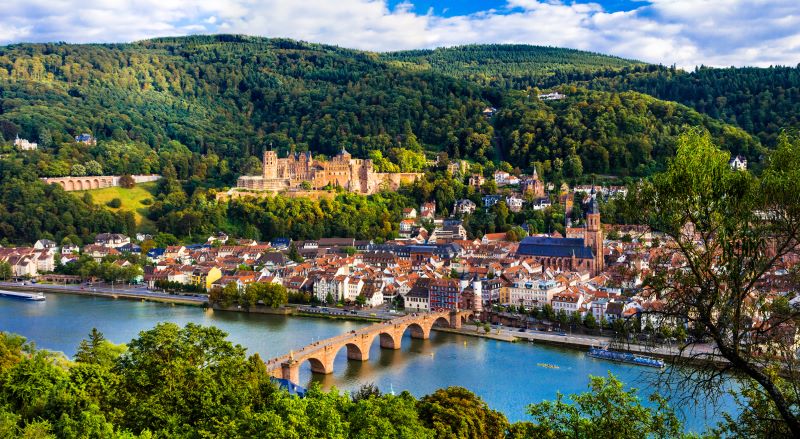
Heidelberg from above. Image via Shutterstock
Our pick of the lot, the town of Heidelberg, home to Germany’s oldest university, whose baroque charm has inspired some of the 18th and 19th centuries greatest Romantics, most notably the poet Goethe and painter Turner. It’s beyond quaint, set on the beautiful river Neckar, and overlooked by evocative castle ruins. Visit the castle gardens for a glorious view of the town, stroll through the Old Town to absorb the historic atmosphere or join the Philosopher’s Walk which connects you with some of the great minds of the Romantic period.
3. Wonder at the Beautiful Castles
If this hasn’t been enough history for you yet, what’s a trip to Germany’s countryside without taking in one of their fairy-tale castles? Outside of those within towns, there are two incredible examples to feast your eyes on.
Hohenzollern Castle is located just south of Tubingen and is known as one of the most impressive castles in Germany. Its age is still unknown, but the earliest references to this hilltop castle can be found as far back as 1061. Rebuilt and refortified several times over the ages, its final form is thanks to King Frederick William IV of Prussia. He updated the castle as a neo-Gothic complex, with impressive spires, tower and details. It’s also home to the sumptuous Prussian crown jewels. For a really special experience, we recommend booking a sunset hot air balloon flight over the castle, to truly wonder at its splendour in the surrounding landscape.

Hohenzollern Castle. Image via Shutterstock
If that doesn’t sate your thirst for fairy tale romance, we also recommend Lichenstein Castle, perched high on a dramatic cliff face. Set between Stuttgart and Ulm, it’s a Gothic-style castle dating back to the 11th century, but like Hohenzollern, it was rebuilt in the 19th century to emphasise its dramatic location and imagination. Still privately owned by the Dukes of Urach, this small castle is well worth a visit.
4. Take a break at Lake Constance
If all that history has taken it out of you, we recommend taking a few days to relax in one of Europe’s favourite watery playgrounds, Lake Constance. Bordering Austria and Switzerland, as well as Germany, it is one of Europe’s largest lakes. If you’re an active holidaymaker, it’s the perfect spot for hiking, water sports and boating. Or, if you like your trips a little more restful, you can unwind and soak up the sun- nowhere in Germany gets more sunshine than Konstanz. Stroll through the medieval towns, taste wine in the verdant vineyards, and marvel at sunset over the waters.
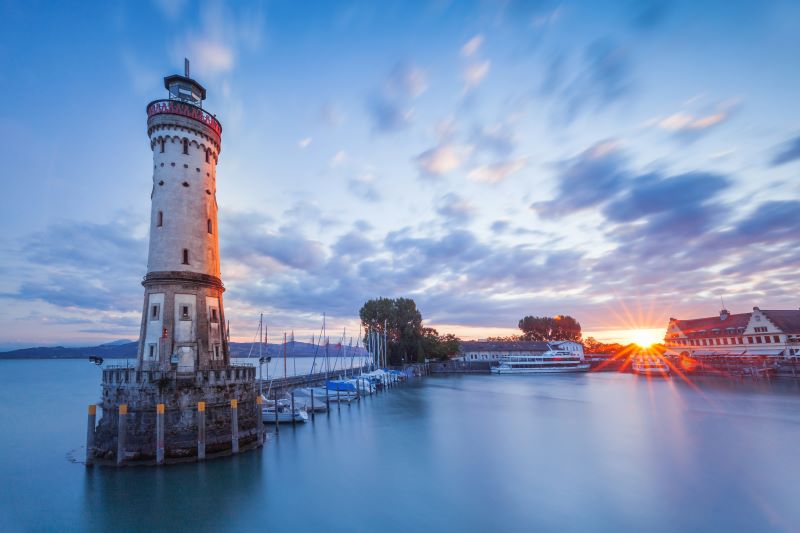
Lindau on Lake Constance. Image via Shutterstock.
5. Black Forest and Freiburg
Potentially one of the most famous parts of Baden-Wurttemberg is the Black Forest – and not just for the rich cherry gateau (although that’s something you just have to indulge in during your trip!). Deep valleys, soaring waterfalls and lavish woodlands make this a natural wonder to behold. It’s perfect for touring slowly on foot, so plan hikes and bike rides to make the most of the environs. Highlights also include glacial lake Titisee and the Triberg falls.
To make the most of this stunning landscape, we recommend setting up base in the ancient city of Freiburg, Germany’s warmest city. It’s a cheerful town of cobblestone streets and iconic half-timbered houses. Head out on a hike in the forest, or, if you’re just after the views, take the cable car up the Schlossberg Mountain for the full panorama. It has a relaxed lifestyle and wealth of cafes and bars to help you celebrate on your return back down.
- The Black Forest in the morning. Image via Shutterstock.
- Mummelsee lake in the Black Forest. Image via Shutterstock.
Where to Stay
Whether you’re after a city hotel or a country retreat, there are all sorts of accommodation options to choose from in Baden-Württemberg. Here are our recommended picks of where to stay.
Zum Ritter St Georg
This 16th century building is one of Heidelberg’s oldest townhouse hotels, set right in the centre of the city within walking distance of most of the sights. All rooms are ensuite with views of the town centre or castle ruins. The rooms are somewhat smaller but still charming. To make sure you make the most of a stay here, splash out on a deluxe room with guaranteed character and a view of the town.
Steinberger Hotel
Located on the lake, on its own private island, the Steinberger Inselhotel is a former Dominican monastery turned into a luxury hotel. It’s less than a 10-minute walk into the centre of the old town, but with terrace dining and rooms with views across the water, you’ll feel calm and secluded. That’s not to mention the on-site spa with sauna, steam room and massages on offer, plus in the summer months, you can swim in the lake itself right from their terrace (lifeguard supervised of course!)
RIVA Hotel
Also facing onto Lake Constance is RIVA, a luxury hotel with a focus on nature, design and well-being. Indulge in their in-house spa, sample delights at their fine dining restaurant, Ophelia, or just take in the breathtaking views. It’s also the perfect spot to take advantage of the lake, with bike rental, stand up paddle-boarding, sailing and golf all on offer. If that sounds like too much exercise for you, their stunning terrace and pool also give you access to all the views without all the hard work!
Where to Eat and Drink
The thought of German cuisine might not immediately inspire sighs of delight, but don’t be deceived! Baden-Wurttemberg has plenty of incredible culinary offerings to tempt your taste buds, from the traditional hearty meat dishes, to international European international bistro options.
Try Spätzle in Stuttgart
Spätzle is a delicacy local to Baden-Wurtemburg. Easily described as a type of pasta, it’s made from eggs, flour and water but in the right hands, it can turn into something really special, combined with meat, cheese or even dropped into soups. If you fancy it, we recommend tasting it at Weinstube-Froehlich in Stuttgart, where you can sample it alongside some regional wines in a charming courtyard setting.
Indulge in Black Forest Cake
Let’s be honest, if you head down to the Black Forest region, you’ll hardly be able to avoid Black Forest Gateau (or Schwarzwälder Kirschtorte to the locals). Pretty much every cafe in the region offers Kuchen und Kafe (cake and coffee) at 3pm. Lots of these make you fight for it though, placed in remote hilltop villages which require a three-hour hike to get to. For those who are less energised however, we suggest heading to Cafe Schaefer in the picturesque Black Forest village of Triberg (home to those spectacular waterfalls).
Sip a beer in Heidelberg
Fancy a drink? Beer-lovers cannot miss out on Vetter’s Alt Heidelberger Brauhaus, Heidelberg’s original brewery. For the strong-hearted, it is known for having brewed the world’s strongest beer (33%), which it has now toned down to a still intimidating 10.5%. For those after a lighter taste, they have a whole host of locally-brewed German beers on tap, along with a menu of European classics.

